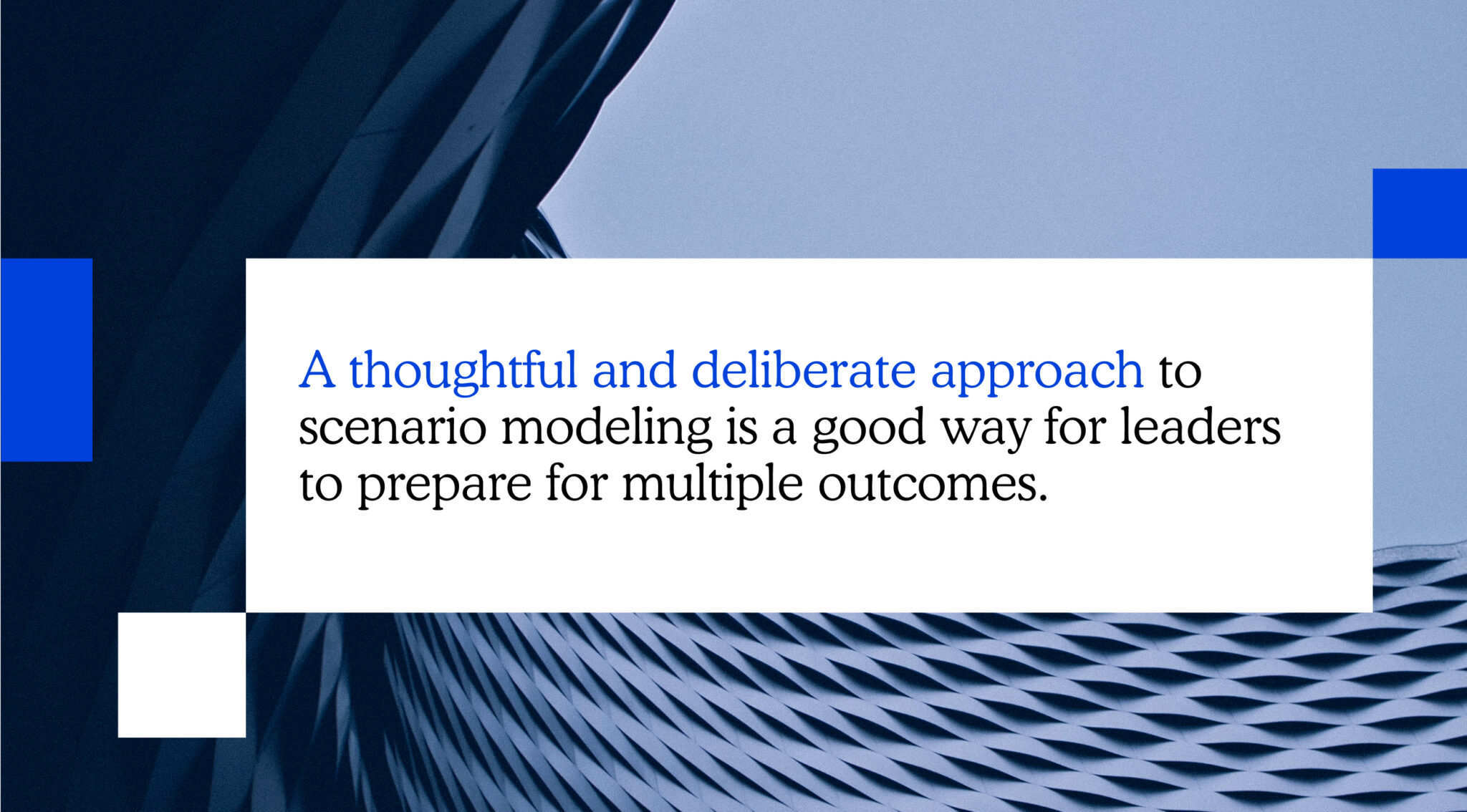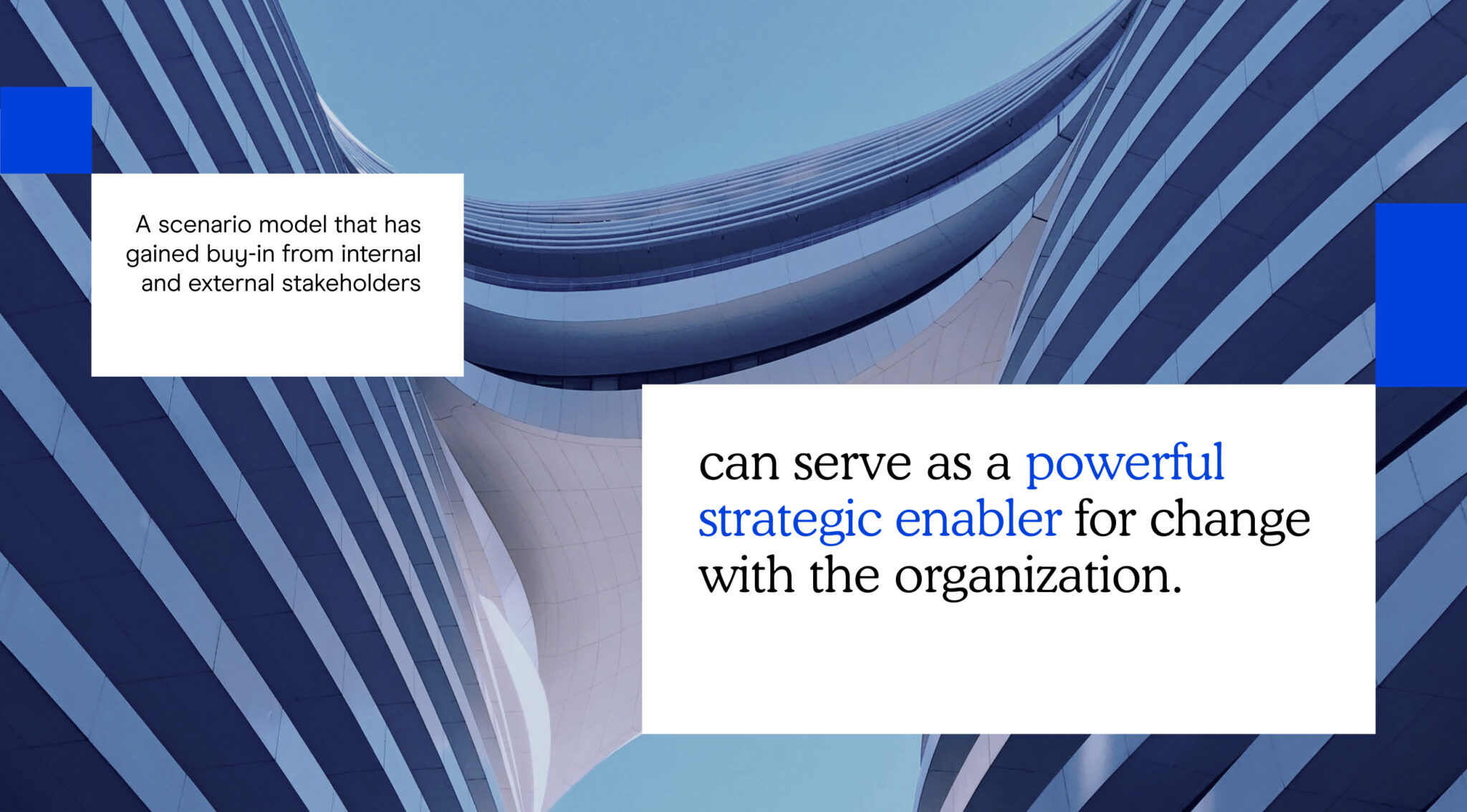Looking Ahead & Around the Corner with Scenario Modeling
A Guide for an Effective Budgeting and Planning Strategy
By Ryan Brown, Principal and Strategic Planning/FP&A Lead at WestCap
As we approach the end of Q2 and begin thinking about mid-year reforecasting and preparations for the 2025 cycle, the importance of scenario modeling as part of a robust approach to planning comes into focus. 2024 has presented one of the most challenging planning landscapes in recent memory: geopolitical risk driven by two high-profile wars, concerns around the direction the Fed will take to combat relatively high inflation, and the upcoming presidential election all have increased angst within the teams tasked with seeing around the corner.
Why, then, do management teams often seem intent on presenting a singular, fixed outlook as part of the budgeting process? There are several reasons: “the budget is the budget,” fear of “analysis paralysis,” and confusion due to “multiple sets of numbers,” to name a few. Exogenous shocks happen, however, and a thoughtful and deliberate approach to scenario modeling is a good way for leaders to prepare for multiple outcomes.

Four Reasons to Incorporate Scenario Modeling into Annual Planning Cycles
1. Micro and Macro Unpredictability
Variables within a management team’s control (such as pricing, go-to-market approach, and R&D spend) are often utilized to create planning scenarios. While these endogenous, or “micro,” variables are largely controllable and predictable, the majority are not. Management teams do not have any control over interest rates, inflation, GDP growth, domestic and global politics and forces majeure. That said, having a lack of control should not necessarily lead to a lack of preparation. “Hundred-year” events such as COVID cannot be anticipated, but other macro variables with longer track records can present historical evidence of sector-specific headwinds or tailwinds. In a choppy environment, a planning team should lean on this data to further inform scenario planning and provide a range of probabilistic outcomes for the board and investors to consider.
2. Agility and Adaptability
While scenario planning serves the important purpose of keeping key stakeholders informed and aware, it also provides an opportunity for the management team to have an off-the-shelf game plan ready to go when the tide turns, either positively or negatively. Most CEOs agree that the ability to pivot quickly is a hallmark of a strong operating team. The need for real-time decision making to defensively or offensively reallocate capital and shift priorities can mark the difference between winners and losers once the dust settles. However, if the right planning based on accurate data is not in place to effectuate the shift, mistakes could prove to be costly. Having a detailed, step-by-step plan in place for each scenario can mitigate change management risk and preserve value as the company progresses through the year and forecasts change to actuals.
3. Data-Driven Culture
Once an effective scenario model is built and the right processes are in place to implement it as an effective management and reporting tool, the value to the organization as a whole can be enhanced across all functions. As more data is timely and accurately collected to inform model inputs, and the actual outcomes can be measured against those inputs, a flywheel effect is created that enhances the accuracy of future forecasts. This identification of leading indicators empowers not only the finance team leading the planning effort, but also other internal consumers of data such as the product and commercial teams. Proactive stress testing across key variables enables a richer understanding of the elasticity of assumptions that really drive the business forward.
4. Strategic Prioritization and Interconnectivity
A scenario model that has gained buy-in from internal and external stakeholders can serve as a powerful strategic enabler for change with the organization. Strategic imperatives such as capital allocation, growth initiatives, and M&A connect back to performance, but changes in the availability of capital due to variance in performance relative to plan can affect each differently. As an example, let’s assume a model’s base case scenario projects $50M of annual free cash flow, and the board has approved an allocation of $20M for organic initiatives, $20M for inorganic initiatives (M&A), and $10M for shareholder dividends. Now suppose actual performance through six months indicates a revised free cash flow target of $100M. How will the allocation mix change, and has the work been done in advance to ensure value creation is maximized? Conversely, imagine the revised target is $25M. What initiatives will be de-prioritized or eliminated because of the cash flow shortfall? A robust approach to scenario modeling, planning for variation in both sources and uses of capital, will lead to enhanced stakeholder visibility, reduced friction, and help prepare the organization for the next stage of growth.

Standing Up a Scenario Model in Practice
As we head into the upcoming planning cycle, there are a few key tenets and lessons learned to follow when considering the implementation of a scenario model into the standard cadence:
- Plan for 3-4 cases: This includes (i) base, (ii) upside, (iii) downside, and potentially include a (iv) “revenue zero” case as a lesson learned from COVID
- The base case should be a high confidence outcome, meaning a greater than 50% probability of achieving target KPIs
- Upside and downside cases should be considered ~25% probability, respectively, with “revenue zero” an outlier
- Combine a top-down view set by the board and executive leadership with a bottom-up view that leverages a range of inputs from all key departments, describing in detail the assumptions behind each case
- Increase the model’s dynamism: Minimize “hard codes” and place all key assumptions on one cleanly organized worksheet
- Track outcomes and learn from mistakes: Calibrate the elasticity of each key assumption over time and recast the assumption set as part of the annual cycle




